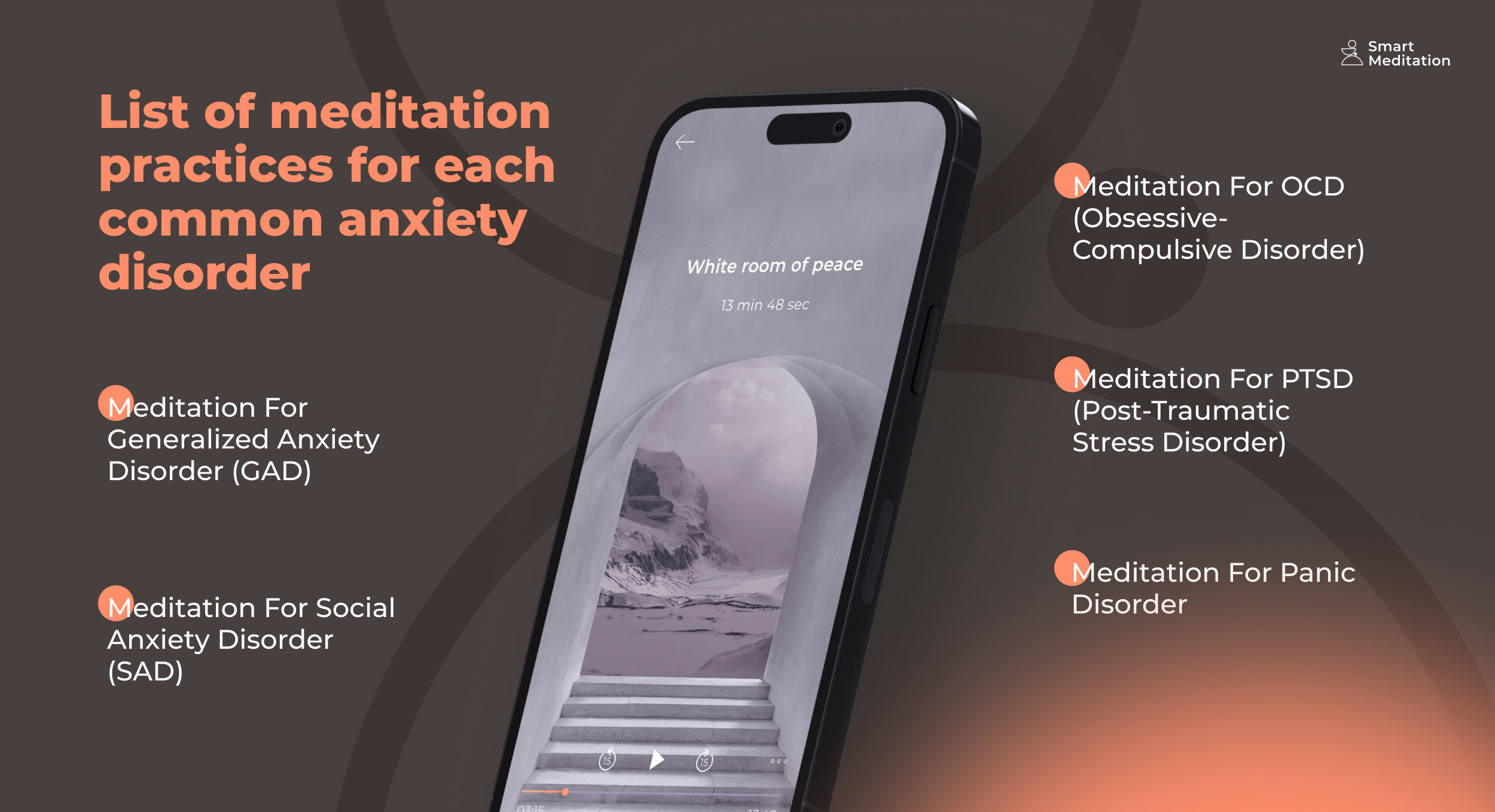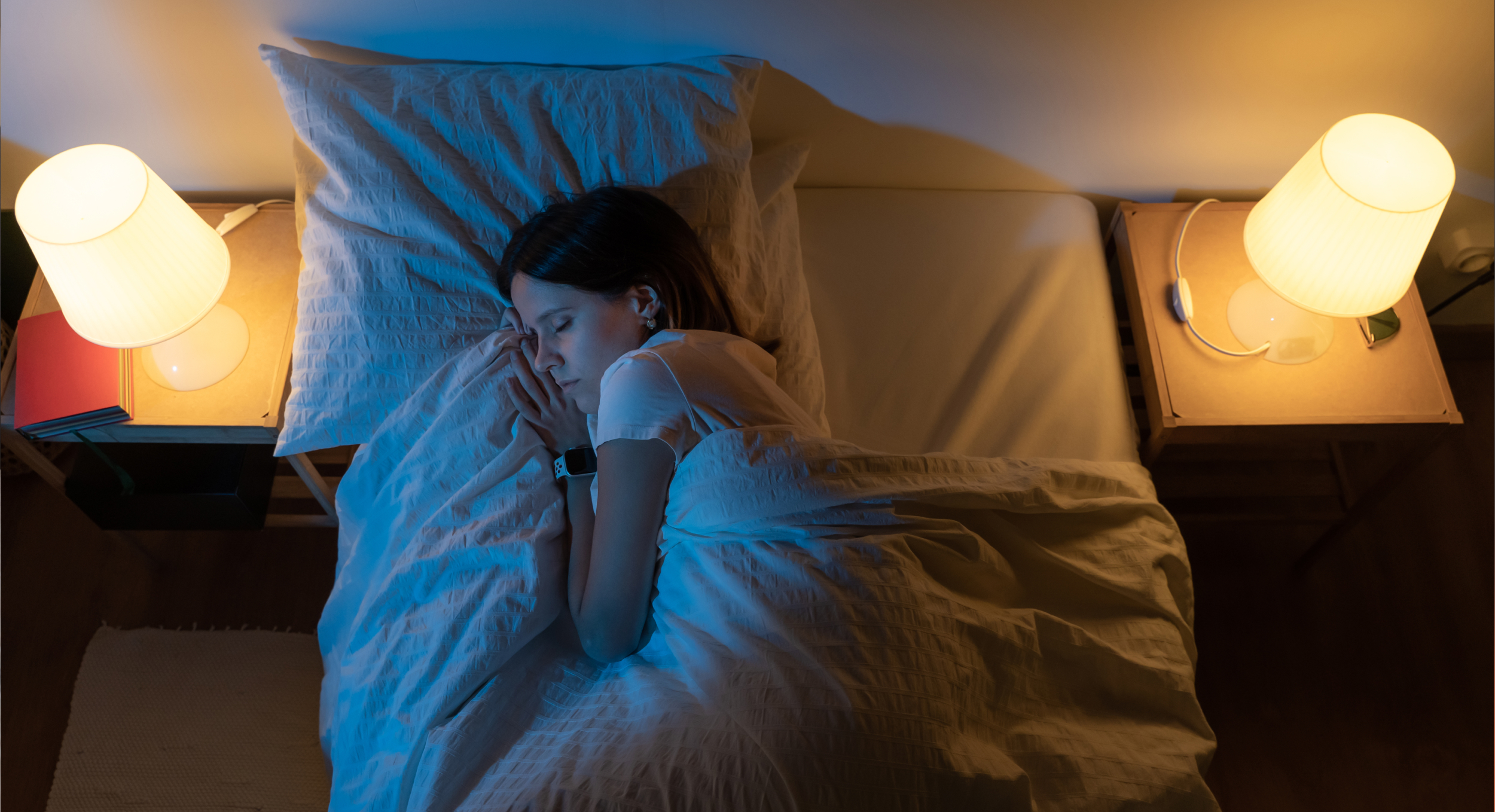
Different Types of Anxiety Disorders and How Meditation Helps Against Them
Anxiety by itself is a completely normal emotion to experience, albeit unpleasant. It’s how your brain responds to stress and warns you of impending danger. In our modern life, these dangers tend to be more social and psychological than physical – you might be anxious when faced with a challenge at work, before a test, or before making a crucial life decision.
Anxiety disorders, however, are a totally different thing. They are a set of mental conditions that produce unrelenting, intense worry and fear. These uncomfortable, out-of-proportion and protracted sensations of panic interfere with daily activities and can massively affect our well-being.
In this article, we’re looking into the main causes of anxiety disorders and how meditation can effectively serve as one of the methods of fighting them. (Note: this article’s purpose is to provide information, not to replace treatment; if you’re experiencing severe symptoms of an anxiety disorder, immediately consult a professional therapist.)
Causes Of Anxiety Disorders
Anxiety disorders are most commonly developed for the following reasons:
Stressful environment or life events:
These refer to tense, anxiety-inducing situations you find yourself regularly in your present or ones you have witnessed or experienced in the past. Childhood abuse and neglect, the loss of a loved one, being attacked or seeing violence – all these types of life experiences are frequently associated with anxiety disorders.
Substance abuse or withdrawal:
Alcohol and drug abuse can go hand in hand with anxiety disorders. The feelings of addiction and the symptoms of withdrawal may put your nervous system under tremendous stress.
Specific medical conditions:
Some heart, lung, and thyroid diseases can exacerbate or induce symptoms that are similar to those of anxiety disorders. When discussing anxiety with your doctor, it’s crucial to undergo a thorough physical examination to rule out any medical disorders.
Genetics::
Some people have a predisposition to anxiety disorders because of the genes they’ve inherited from their parents. Even though it’s rarely a direct cause, it can aggravate the situation, making any disorders more likely to show and more difficult to treat.
Brain malfunction:
According to several studies, dysfunctional brain circuits that regulate emotions and fear may be responsible for a vast range of anxiety disorders.

How Meditation Can Help With Anxiety Disorders
With every passing year, we’re getting a deeper understanding of how meditation affects the body and the brain. Various meditation practices not only appear to alter the structure of the brain in specific ways, but also to have an impact on how it performs. This is what many scientists have deduced in separate studies after monitoring the amounts of neurotransmitters, hormones, and biomarkers, which are vital gauges of brain activity.
For instance, one study claims that eight weeks of meditation can considerably change the stress response in individuals with generalized anxiety disorder (GAD), as shown by the levels of inflammatory markers and stress hormones.
The study included 89 participants who suffered from GAD – one group attended a mindfulness meditation course, and another one served as a control group. Both groups had their blood taken before and after the course to measure the effects that meditation had on the first group and compare the results against the control group. Some of the chemicals that were the focal point of the research were inflammatory proteins (IL-6 and TNF-) and stress hormones (in this case cortisol and adrenocorticotropic hormone, or ACTH).
The analysis showed that the meditation group had significantly lower levels of ACTH, IL-6, and TNF- once the course had finished. Interestingly, cortisol decrease wasn’t deemed too significant, but the possible explanation may be the stress induced by the research itself.
Now, GAD is not the only anxiety disorder out there, and every one of them needs careful treatment with an individual meditation plan. To help you find what works best for you and for your disorder, we’ve compiled the following list of meditation practices for each common anxiety disorder:

Meditation For Generalized Anxiety Disorder (GAD)
As briefly mentioned above,.the type of meditation most frequently used to treat GAD is mindfulness-based meditation.
The mindfulness stress reduction method is all about training the ability to disengage from anxiety-inducing thoughts. It’s accomplished by developing environmental awareness, recognizing physical tension, taking control of thought patterns, and learning how to manage challenging emotions.
There are a lot of mindfulness meditation techniques, and this is one of the more simple ones you can try out as a beginner:
- Sit upright in a chair and place your feet flat on the floor
- Begin to pay attention to your breath; don’t try to change how you are breathing; simply observe your body as you inhale and exhale;
- You might feel compelled to shift your focus elsewhere – resist this urge and continue to focus on your breathing.
- You might have anxious thoughts pass through your mind – acknowledge them, but don’t focus on them, bring the concentration back to your breathing;
- Continue this procedure for about 10 minutes;
- Once you’re done. open your eyes and tell yourself how you feel; don’t judge or evaluate your emotions, simply acknowledge their presence.
Remember that you don’t need a lot of time to meditate. Try to set aside just a few minutes each day when you first start out. As you experience what it’s like to be quiet and learn how to relax, you can gradually extend that to longer periods of time.
Meditation For Social Anxiety Disorder (SAD)
The mindfulness technique will be a good choice for a meditation for social anxiety disorder as well; moreover, it can be applied to practically every anxiety disorder due to its universal nature. However, in this and in the following sections we’ll bring up other methods as well to best treat each individual condition.
Suffering from social anxiety usually means that you feel uncomfortable as you are when seen by others or interacting with others. That’s why a good meditation for social anxiety is performing body scan meditations – this method helps you learn your body and mind better and learn to be in harmony with yourself. It also can help you feel less stressed overall and lower your cortisol levels.
To perform a body scan meditation, do the following:
- Close your eyes and find a comfortable position to sit or lie down.
- Start by focusing on one specific part of your body – if you decide to go from bottom to top, begin with your toes and feet;
- Think about how this body part feels right now – does it feel tense, loose, warm, cool, or tingly?
- Remember to simply observe, not evaluate or judge;
- After about a minute, switch to another body part, always going in the same direction – if you started with feet, go up towards your legs, then thighs, then abdomen, etc.
Meditation For Panic Disorder
Racing heartbeat, rapid breathing, and the overwhelming feeling of fear are some of the main symptoms of a panic attack. The “fight or flight” response, which is triggered as a panic begins, usually generates, deceiving your body into believing that you are in danger even though you are not. You also feel as though you have no control over what is happening in their body and mind.
For a meditation for panic disorder, try out the five senses technique, which has a similar premise to a body scan:
- Sit down or lie down comfortably.
- Focus on each of the five senses (touch, smell, taste, sight, and hearing) and how they behave in the present moment;
- As you’re doing that, ask yourself what you are currently feeling (what you’re smelling/hearing/seeing/touching/tasting);
- Spend a minute or two focusing on each of your senses, and repeat the cycle however many times you’re comfortable with.
Meditation For OCD (Obsessive-Compulsive Disorder)
OCD is an anxiety disorder that makes a person very restless, erratic and driven by obsessive, compulsive thoughts and behaviors. It has a cyclic nature whereby a person first suffers from a temporary obsession (checking doors, washing hands), then this obsession causes anxiety, then the anxiety creates a compulsion to act on the obsession, and, finally, a temporary relief comes in until an obsession resurfaces again.
Obsessive thoughts and compulsive inclinations are easier to suppress when you concentrate on one specific thing – a reason why the mantra meditation is considered a very effective meditation for OCD. A mantra is a short phrase that you repeat throughout your meditation and is the only focus during the process. Depending on your background or preference, your mantras can be such phrases as “Om”, “Om Namah Shivaya”, and “Sat Nam.” It acts as an anchor for your mind, not allowing it to be distracted very easily by intrusive, compulsive thoughts.
Meditation For PTSD (Post-Traumatic Stress Disorder)
PTSD is one of the most serious anxiety disorders – if you’ve suffered a big trauma in your life and it greatly affects your well-being through severe flashbacks and nightmares, immediately consult a professional. At the same time, meditation can also be very easily incorporated in your treatment.
Due to the very sensitive and brutal nature of the disorder, it’s recommended that you should try guided meditation for PTSD. Guided meditation is referred to as any meditation practice that is helped by a third party – a presence of another person to support you will greatly help ease your mind. Depending on what you’re comfortable with, try out group meditation classes like yoga or arrange individual sessions with a qualified instructor.
Alternatively, if you prefer solitude in your meditation for PTSD, any of the practices cited above will also be solid choices – experiment with different techniques and find out what works best for you.
Conclusion
Anxiety disorders can result from stressful environments, addictions and even a range of medical conditions or genetic predisposition. These afflictions can cause much trouble in your life and require timely, professional treatment. At the same time, whatever the treatment may be, a practice such as meditation can be very smoothly integrated into your recovery plan.
Meditation is known to reduce the levels of inflammatory markers and stress hormones such as cortisol. Depending on your condition, different meditation techniques may perform better than others, so feel free to try out a couple and see what gives you the best results. Guided meditation for anxiety and panic is a good choice if you seek external help; if not, a solo mindfulness meditation can also go a long way.






